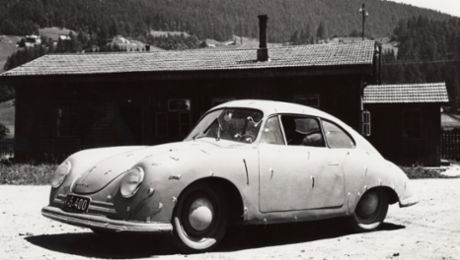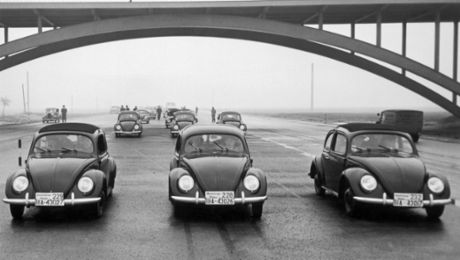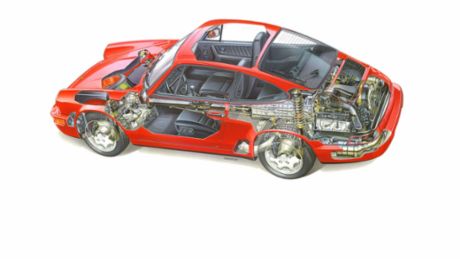1928: The moment of transformation
In many a dispute it is an innocent party who suffers. In this case the innocent party was a hat – the hat which had performed loyal service on the head of Dr. Ing. Ferdinand Porsche. In the heat of battle, the hat landed in the snow, angrily trampled by its owner while releasing months of pent-up resentment as a safety valve for the rumbling dispute and the exasperating power games played out between great minds. The flattened hat was a moment that displayed Ferdinand Porsche’s impatient and quick-tempered character traits. Yet once again it was a moment that set the course for the future.
Since April 1923, Ferdinand Porsche had been demonstrating his ingenuity in building engines at Daimler-Motoren-Gesellschaft. The results were seen in groundbreaking advances. They brought his employer valuable know-how and prestigious race victories, such as the triple victory in the Targa Florio in 1924 and the Grand Prix of Germany in 1926 with the two-litre compressor engine devised by Porsche. And the six-cylinder K compressor cars or the S sport models, SS (Super-Sport) and SSK (Super-Sport-Kompressor) are probably the most famous – albeit most prohibitively expensive – German road-going cars of this decade.
Ferdinand Porsche an “intuitive designer”
Ferdinand Porsche was therefore not only the creator of valuable technology but also one reason behind the good reputation that Daimler enjoyed within the community of automobile fans. Consequently, Porsche expected a job for life. Yet this was not to be. A merger between Daimler-Motoren-Gesellschaft and Benz & Cie. to form Daimler-Benz AG weakened Porsche’s position. The arrival of Hans Nibel with the merger not only brought the former chief designer and chairman of Benz & Cie. on board but also a second alpha animal into the upper echelons of the design office. Added to this were differences of opinion in the type and target group of the automobiles built by Daimler-Benz. Porsche relied on supreme quality, performance and the latest technologies, but the company management wanted more affordable products – as well as lower production and research costs.
The conflict smouldered and intensified. Porsche, a free-thinking and spontaneous “intuitive designer” with an unerring technical instinct, felt increasingly out of place in the strongly hierarchical company. Deep down inside, he must have taken the decision a long time before – yet the event that specifically triggered his sudden departure did not come until the winter of 1928: a difference of opinion concerning the Mercedes-Benz Type 8/38 medium-size car developed into a raucous war of words in the courtyard outside the design workshops. The outcome: a hat in the snow and Ferdinand Porsche’s resignation from Daimler Benz – despite the emerging economic crisis. It was an awkward moment and a risky decision. And the next step on the path to Dr. Ing. h. c. F. Porsche GmbH, his own engineering office.




